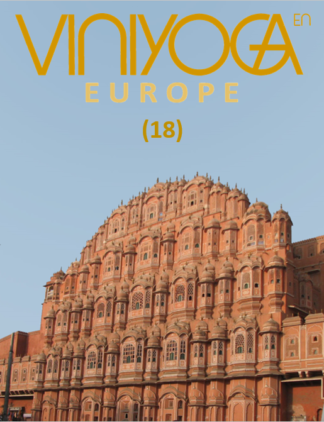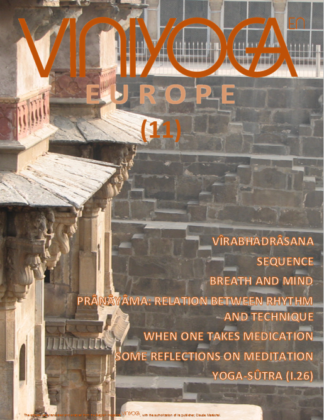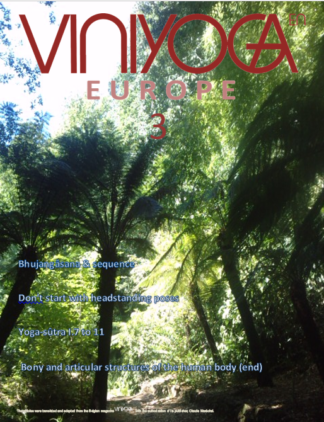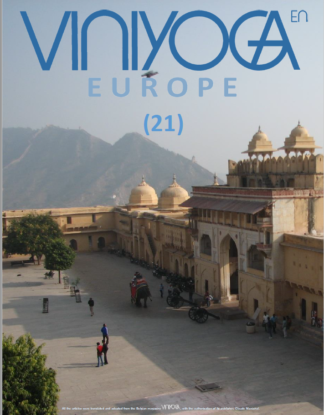Description
(41 pages)
UTKATÂSANA
Utkatâsana is a symmetrical standing posture with a complete flexion of the lower limbs. It strengthens the body and makes it more flexible. It is used in a dynamic modified way as a counter posture for many standing postures.
By Claude Maréchal
SEQUENCE: UTKATÂSANA
This sequence presents a vigorous warm-up in order to prepare well all the muscles and joints required for the posture; it also has a gradual progression towards utkatâsana for several weeks and a long descendant phase with compensations in the form of light relaxation and limbering-up work for the vertebral column.
By Claude Maréchal
From a seminar with T.K.V. Desikachar in Sévrier…
By T.K.V. Desikachar
SAMÂDHI IN HATHA-YOGA-PRADÎPIKÂ (last part)
The fourth chapter of Hatha-Yoga-Pradîpikâ deals with mental concentration or samâdhi. Often, we hear it said that hatha-yoga and râja-yoga are different paths. Actually, reading this text attentively shows that it is not so.
By Uwe Bräutigam
VINIYOGA OR HOW TO HEAL THE MIND
Nature is formed by three fundamental qualities (guna). Yoga therapy can help someone who has problems, by acting on this person’s guna directly and taking into account this person’s circumstances of life.
By Claude Maréchal, with the collaboration of Élisabeth Wieczorek
EACH ONE WITH DIFFERENT POSSIBILITIES
The same problems do not necessarily have the same causes. Besides, each person is different and solutions must take into account each one’s wishes and possibilities.
By T.K.V. Desikachar
THE ART OF VEDIC TEACHING (SECOND PART)
The relationship between a master (âcârya or guru) and disciple (shishya) is as essential as that between the upper and lower jaws. The tongue is an element of “connection” that is necessary for the production of sound…
By T.K.V. Desikachar
YOGA-SÛTRA I.39
Patanjali ends the series of “means” to reestablish mental tranquility with this aphorism about meditation.
Dhyâna, or meditation, has a considerable role in yoga teaching and practice. The comment and explanations will shed a special light on this subject.
Comments by Professor Shri T. Krishnamacharya; presentation and explanations by T.K.V. Desikachar





